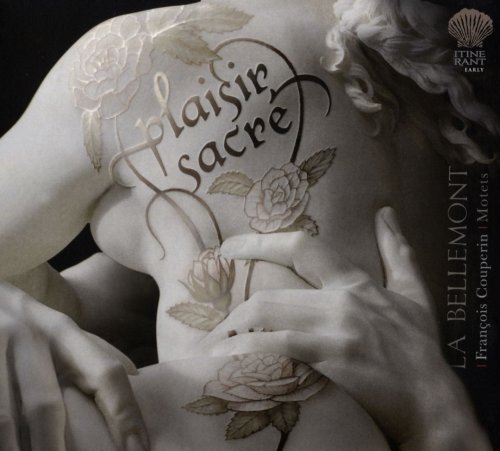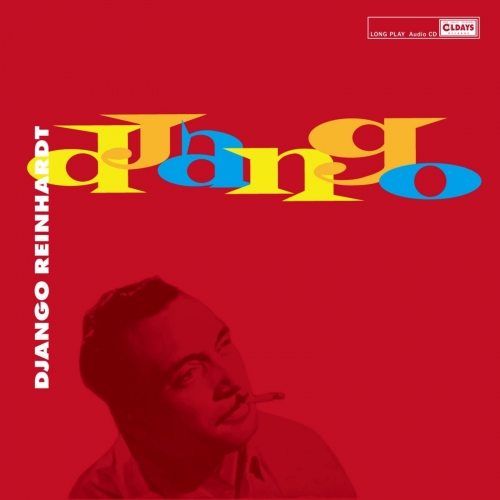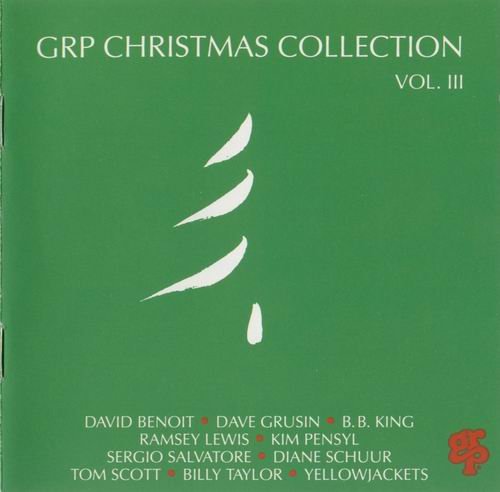La Bellemont, Rafael Munoz - François Couperin: Plaisir sacré (2014)

Artist: La Bellemont, Rafael Munoz
Title: François Couperin: Plaisir sacré
Year Of Release: 2014
Label: Itinerant
Genre: Classical
Quality: FLAC (image+.cue,log,scans)
Total Time: 50:16
Total Size: 322 Mb
WebSite: Album Preview
Tracklist: Title: François Couperin: Plaisir sacré
Year Of Release: 2014
Label: Itinerant
Genre: Classical
Quality: FLAC (image+.cue,log,scans)
Total Time: 50:16
Total Size: 322 Mb
WebSite: Album Preview
1. Prélude pour les violes - Monsieur de Sainte-Colombe le fils (?-1713) 3:12
François Couperin (1668-1733)
2. Venite exultemus Domino 3:54
3. Regina coeli laetare 3:39
4. Prélude pour l’orgue - Guillaume Gabriel Nivers (c.1632-1714) 1:07
5. Domine salvum fac Regem - François Couperin 3:06
6. Fuga - Louis Couperin (c.1626-1661) 1:58
7. Ad te levavi oculos meos - François Couperin 8:25
8. Passacorde pour le théorbe - Angelo Michele Bartolotti (c. 1615-c. 1682) 0:48
9. Fantaisie en Rondeau - Monsieur de Sainte-Colombe le fils 3:47
10. Troisième leçon de Ténèbres - François Couperin 11:41
11. Les pleurs - Monsieur de Sainte-Colombe le père (1640?-c.1701) 2:26
12. Motet de saint Augustin - François Couperin 6:18
Performers:
Delia Agúndez, soprano (2,3,5,10,12)
Magdalena Padilla, soprano (2,3,10,12)
Jesús María García Aréjula, barítono (5,7,12)
Johanna Rose, viola da gamba bajo y pardessus de viole (1,7,11)
LA BELLEMONT
Sara Ruiz, viola da gamba bajo y pardessus de viole
Laura Puerto, órgano
Rafael Muñoz, archilaúd, tiorba y dirección
François Couperin is best-known for his instrumental and keyboard works. He also composed quite a number of vocal works, but that part of his output remains in shadow with the exception of the three Leçons de Ténèbres which count among the most renowned vocal works for Passiontide. These also belong among the very few vocal compositions from Couperin's pen which were printed during his lifetime. Most of his vocal works are preserved in manuscript and it is assumed that a considerable part of his output in this genre has been lost.
It is not known exactly why he wrote sacred music. In 1693 he was appointed organiste du roi but it is unlikely that it was his duty to compose vocal music for the royal chapel. However, it is generally assumed that most of his sacred music was connected to the chapel and was written between 1693 and 1715, the latter being the year of Louis XIV's death. Most of the motets are of the petit motet genre, scored for one or several solo voices and basso continuo, sometimes with two additional melody parts, usually for violins. An example of the latter is Ad te levavi oculos meos in which the two treble parts are played here on pardessus de viole.
Most motets have para-liturgical texts. Venite exultemus is written for a service to the Blessed Sacrament: the fourth section refers to "eating Jesus' flesh" and "drinking the blood of Christ". In the treatment of the text Couperin's motets show the influence of the Italian style. It has been suggested that he was inspired here by Marc-Antoine Charpentier, the most prominent exponent of the Italian style in France in the late 17th century. In this particular motet it comes to the fore in the exclamations in the third section: "Oh, immense love, oh, admirable banquet, oh, adorable mystery". Couperin uses the interplay of the two soprano voices effectively to express the content of this episode and its affects. He does the same in the third Leçon de Ténèbres where he creates harmonic progressions full of tension. Another specimen of Italian influence is in the centre of Regina coeli laetare, a piece for Easter; the second and third lines having the character of a recitative.
Ad te levavi oculos meos is a solo motet for bass. There is a strong contrast between the first and the second sections. The opening line, "Unto thee lift I up mine eyes", is set to an ascending figure. The opening line of the second section marks the shift to a rather dark mood: "Have mercy upon us, Lord". The doxology is set to a dance rhythm. Domine salvum fac regem is on a text which was very much a fixed part of the liturgy in the royal chapel. The chapel's frescos contain an angel holding up the inscription with these words: "Lord, save the King". Couperin's motet opens with a descending tetrachord ostinato and closes with a gavotte.
Some of Couperin's motets are written for the feast of a saint. The programme of the present disc ends with a motet for St Augustine, Jucunda vox Ecclesiae: "The joyful voice of the Church Augustine's memory exults with joy for the greater glory of God". It is for three voices and basso continuo and the joyful content is very much reflected by Couperin's music, with an ingenious interplay of the three voices.
As far as I know not all of Couperin's sacred works are available on disc. That is quite surprising considering their quality. The present disc includes some fine examples of the composer's skill in setting a text. Obviously the Troisième Leçon de Ténèbres is the most famous example. It is regrettable that it has been included here as the set of three Leçons de Ténèbres are available in quite a number of recordings. That said, this performance of the third Leçon is one of the best I know. Delia Agúndez and Magdalena Padilla are a perfect match. Their good intonation results in the harmonic tension coming off to maximum effect and expression is served well by the way they treat the text. The exclamations in Venite exultemus reflect the influence of the Italian style and should be given an expressive performance that avoids exaggeration. This is French music after all, and the elegance and restraint which are features of the French style should be observed. That is certainly the case here. Jesús María García Aréjula finds exactly the right approach in Ad te levavi; the second section is full of pathos within the boundaries of the French style.
The motets are surrounded by instrumental works written by some of Couperin's contemporaries. Obviously the viola da gamba plays a major role here; it was one of the main instruments, and Couperin himself wrote two suites for it. It is especially interesting that two pieces by the son of Sieur (probably Jean) de Sainte Colombe are played. He lived in London for some time and his extant music is preserved in English sources. It has been suggested that he moved to England for religious reasons. His father disappeared from the music scene at the end of the 17th century, probably because of Louis XIV's revocation of the Edict of Nantes and his declaring Protestantism illegal. Sainte Colombe senior was one of the greatest viol players of his time and he has become particularly famous for his concerts à deux violes esgales. It is fitting that Couperin's third Leçon is followed by Les pleurs - the tears, from the Concert Tombeau Les regrets.
Guillaume Gabriel Nivers was one of the leading organists at the end of the 17th century who has become especially known for his editions of liturgical music. Louis Couperin is almost exclusively connected to music for harpsichord but for many years he acted as organist. His oeuvre for this instrument has been preserved in a single manuscript. Lastly, Angelo Michele Bartolotti was a theorbo player from Bologna who had settled in France and published here a treatise for the playing of the basso continuo on the theorbo.
The instrumental pieces are nicely played and fit well into the programme. It attests to the sensitive way in which the artists have put it together. The result is a compelling disc whose only minus is its short playing time. I would have liked to hear more from these performers. -- Johan van Veen
It is not known exactly why he wrote sacred music. In 1693 he was appointed organiste du roi but it is unlikely that it was his duty to compose vocal music for the royal chapel. However, it is generally assumed that most of his sacred music was connected to the chapel and was written between 1693 and 1715, the latter being the year of Louis XIV's death. Most of the motets are of the petit motet genre, scored for one or several solo voices and basso continuo, sometimes with two additional melody parts, usually for violins. An example of the latter is Ad te levavi oculos meos in which the two treble parts are played here on pardessus de viole.
Most motets have para-liturgical texts. Venite exultemus is written for a service to the Blessed Sacrament: the fourth section refers to "eating Jesus' flesh" and "drinking the blood of Christ". In the treatment of the text Couperin's motets show the influence of the Italian style. It has been suggested that he was inspired here by Marc-Antoine Charpentier, the most prominent exponent of the Italian style in France in the late 17th century. In this particular motet it comes to the fore in the exclamations in the third section: "Oh, immense love, oh, admirable banquet, oh, adorable mystery". Couperin uses the interplay of the two soprano voices effectively to express the content of this episode and its affects. He does the same in the third Leçon de Ténèbres where he creates harmonic progressions full of tension. Another specimen of Italian influence is in the centre of Regina coeli laetare, a piece for Easter; the second and third lines having the character of a recitative.
Ad te levavi oculos meos is a solo motet for bass. There is a strong contrast between the first and the second sections. The opening line, "Unto thee lift I up mine eyes", is set to an ascending figure. The opening line of the second section marks the shift to a rather dark mood: "Have mercy upon us, Lord". The doxology is set to a dance rhythm. Domine salvum fac regem is on a text which was very much a fixed part of the liturgy in the royal chapel. The chapel's frescos contain an angel holding up the inscription with these words: "Lord, save the King". Couperin's motet opens with a descending tetrachord ostinato and closes with a gavotte.
Some of Couperin's motets are written for the feast of a saint. The programme of the present disc ends with a motet for St Augustine, Jucunda vox Ecclesiae: "The joyful voice of the Church Augustine's memory exults with joy for the greater glory of God". It is for three voices and basso continuo and the joyful content is very much reflected by Couperin's music, with an ingenious interplay of the three voices.
As far as I know not all of Couperin's sacred works are available on disc. That is quite surprising considering their quality. The present disc includes some fine examples of the composer's skill in setting a text. Obviously the Troisième Leçon de Ténèbres is the most famous example. It is regrettable that it has been included here as the set of three Leçons de Ténèbres are available in quite a number of recordings. That said, this performance of the third Leçon is one of the best I know. Delia Agúndez and Magdalena Padilla are a perfect match. Their good intonation results in the harmonic tension coming off to maximum effect and expression is served well by the way they treat the text. The exclamations in Venite exultemus reflect the influence of the Italian style and should be given an expressive performance that avoids exaggeration. This is French music after all, and the elegance and restraint which are features of the French style should be observed. That is certainly the case here. Jesús María García Aréjula finds exactly the right approach in Ad te levavi; the second section is full of pathos within the boundaries of the French style.
The motets are surrounded by instrumental works written by some of Couperin's contemporaries. Obviously the viola da gamba plays a major role here; it was one of the main instruments, and Couperin himself wrote two suites for it. It is especially interesting that two pieces by the son of Sieur (probably Jean) de Sainte Colombe are played. He lived in London for some time and his extant music is preserved in English sources. It has been suggested that he moved to England for religious reasons. His father disappeared from the music scene at the end of the 17th century, probably because of Louis XIV's revocation of the Edict of Nantes and his declaring Protestantism illegal. Sainte Colombe senior was one of the greatest viol players of his time and he has become particularly famous for his concerts à deux violes esgales. It is fitting that Couperin's third Leçon is followed by Les pleurs - the tears, from the Concert Tombeau Les regrets.
Guillaume Gabriel Nivers was one of the leading organists at the end of the 17th century who has become especially known for his editions of liturgical music. Louis Couperin is almost exclusively connected to music for harpsichord but for many years he acted as organist. His oeuvre for this instrument has been preserved in a single manuscript. Lastly, Angelo Michele Bartolotti was a theorbo player from Bologna who had settled in France and published here a treatise for the playing of the basso continuo on the theorbo.
The instrumental pieces are nicely played and fit well into the programme. It attests to the sensitive way in which the artists have put it together. The result is a compelling disc whose only minus is its short playing time. I would have liked to hear more from these performers. -- Johan van Veen








